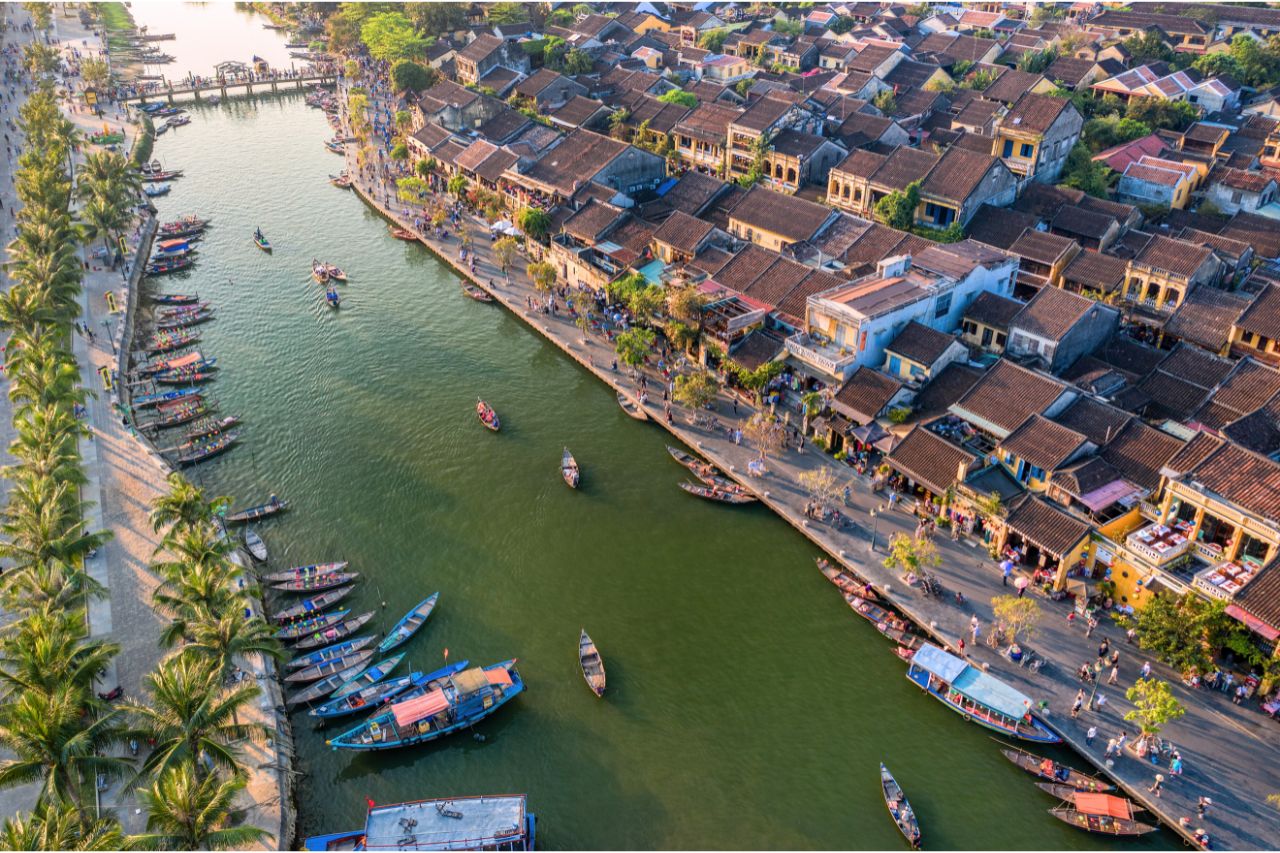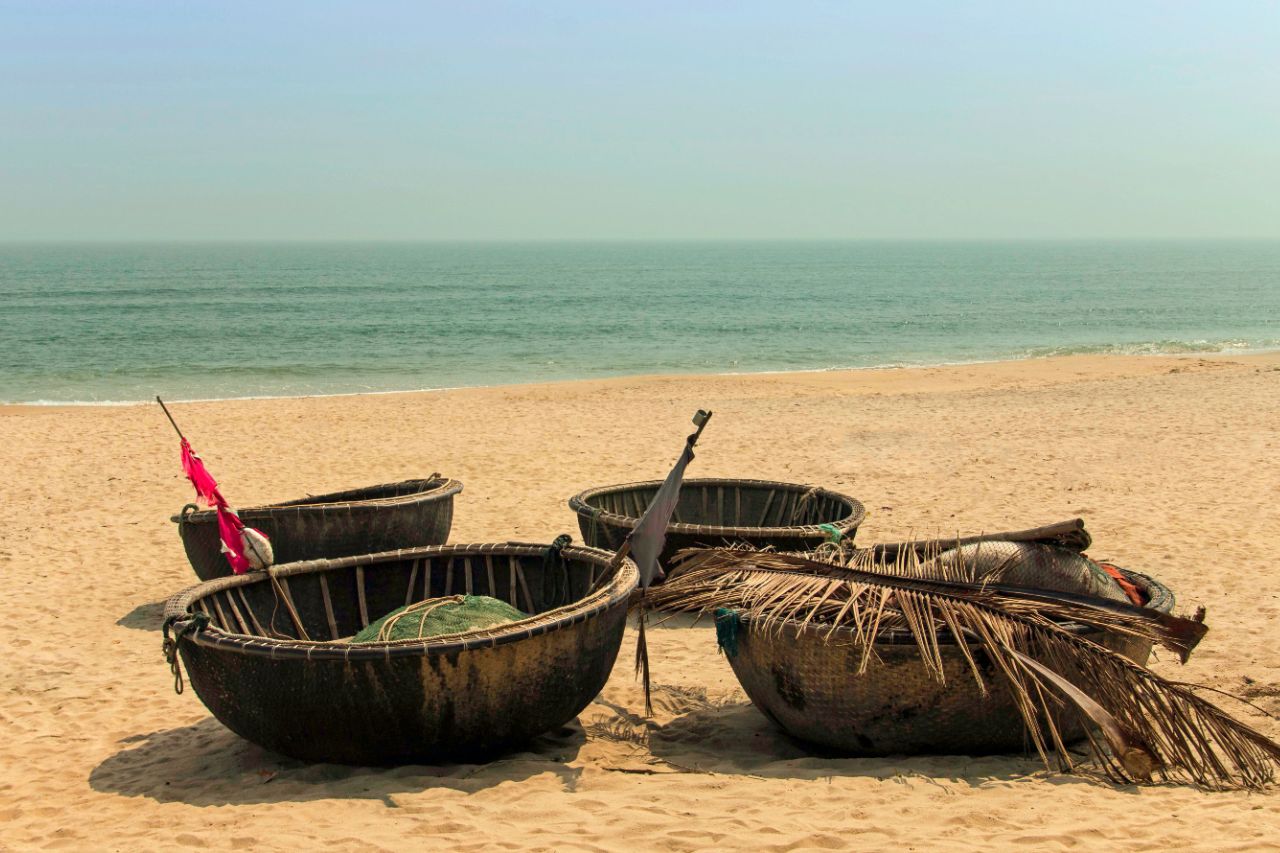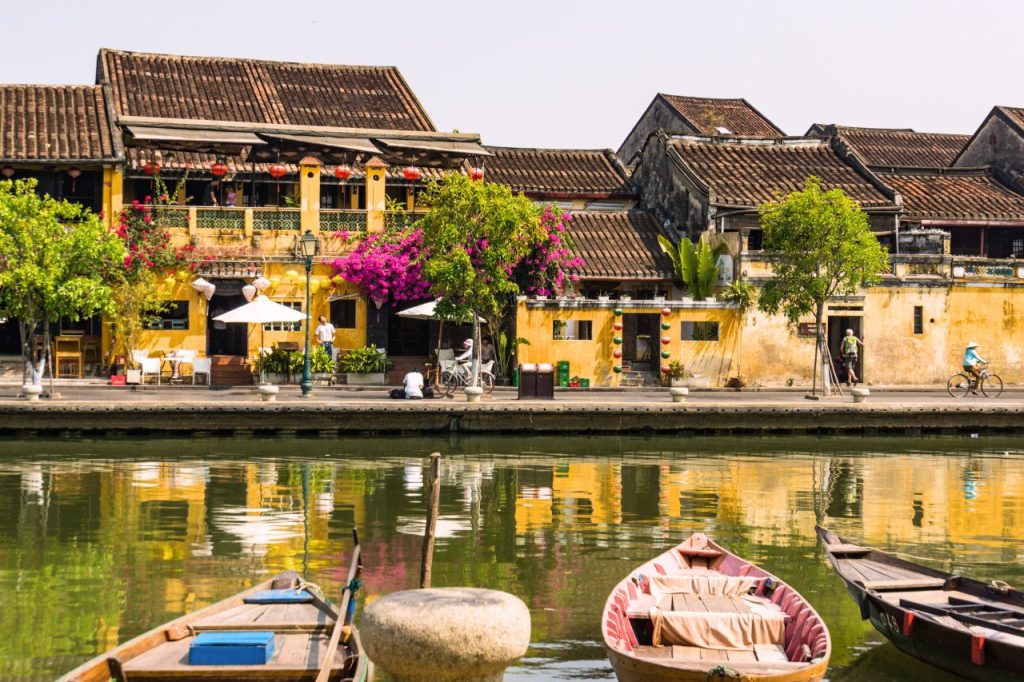Blog, Countries, Destinations, Vietnam
Hoi An Ancient Town
Hoi An is an old town down the Thu Bon River, on the coastal plain of Quang Nam Province, about 30 km south of Danang City. Hoi An used to be known on the international market with many different names such as Lam Ap, Faifo, Hoai Pho and Hoi An.

What is so special about Hoi An is that this little port town is in an incredible state of preservation. It offers some of the most densely-concentrated sights in Vietnam with its old streets bordered with ancient houses and assembly halls, its pagodas, temples, ancient wells and tombs. In total, more than a thousand places of interest. The architecture of Hoi An is characterized by a harmonious blend of Vietnamese, Chinese and Japanese influences. After many centuries, Hoi An is still respectful of its traditions, folk festivals, beliefs and of its sophisticated culinary art. Set in a quiet environment, Hoi An is surrounded by peaceful villages that have crafts such as carpentry, bronze making, ceramic…
Researchers said most of the buildings in Hoi An underwent restoration at the beginning of the 19th century, even if they might be constructed long time ago. The ancient architecture shown most clearly in the Ancient Town that located in Minh An Ward. It covers about 2 square kilometers and almost of all famous relics in Hoi An are gathered here. The streets are very short and narrow, having a winding, crossing as the chessboard style. The topography of the ancient town tilts gradually from north to south. The buildings in the old town are built mostly with traditional materials such as: brick, wood and no more than two floors. The traces of time is able to find not only on the architectural design of each building but also everywhere like: on the yin-yang roof tiles covered with moss and plants; the old gray mold walls; the pictures carved on a strange animal, or describing an old story… Having inherited a multi-cultural architecture so varied and sophisticated, Hoi An must have attracted numerous and talented workers in carpentry, ceramics, and woodcarving from China, Japan and other regions of Vietnam.
For centuries, Hoi An had developed into a melting pot of various nationalities that came to the area, bringing along their own cultures. Accordingly, Hoi An features the co-existence of indigenous customs and habits and those imported by foreign settlers.
There are animist cults, of the Genie-Whale and worship of deities of natural phenomena (such as rain, wind, thunder), but also the worship of Holy Protectors like Thien Hau, Quan Cong, Bao Sinh Dai De, Avalokitesvara, especially among the Chinese community. They hold regular festivals or cultural and religious activities on the occasion of Tet Nguyen Tieu (the 16th day of the 1st lunar month), Thanh Minh (3rd lunar month), Doan Ngo (the 5th day of the 5th lunar month), Trung Thu (the 15th day of the 8th lunar month), Trung Cuu (the 9th day of the 9th lunar month), and Ha Nguyen (the 15th day of the 10th lunar month).
The social and cultural diversity adds up to the uniqueness of Hoi An’s inhabitants. Rich in traditions and early exposed to the outside world, the Hoi An people feature a unique cultural identity, which has been well preserved from generation to generation. Lives of people who stay here incline to be interior with subtle quiet. In the mind of the natives of Hoi An, this town constitutes a large ancient home that shelters a big family of many descendants including hospitable dwellers, friendly hosts and hostesses, kind-hearted women, obedient children and so on. They together form a harmonious community who has lived peacefully side by side through successive generations.

Upon reaching Hoi An, visitors will immediately feel the hospitality and friendship the locals extend to them. One thing that has withstood the test of time, one thing that the Hoi An people today can be proud of and therefore, make every efforts to preserve is their popular ho (chants) and age-old cultural festivals. Among them, the “Nights of Hoi An” is held on the 14th night of every lunar month. Visitors can immerse themselves in a festive atmosphere imbued with the traditional identities of Hoi An.
Hoi An attractions
- In the ancient town: Chua Cau (Japanese Bridge)
- Old Houses: Quan Thang Old House (77 Tran Phu); Diep Dong Nguyen Old House (80 Nguyen Thai Hoc) Tan Ky Old House (101 Nguyen Thai Hoc); Phung Hung Old House (4 Nguyen Thi Minh Khai); Tran Family Chapel (21 Le Loi)
- Ancient Wells: Ba Le Well (Kiet Gieng Alley, Minh An Ward)
- Assembly Halls: Quang Dong Assembly Hall (17 Tran Phu); Phuoc Kien Assembly Hall (46 Tran Phu); Trieu Chau Assembly Hall (157 Nguyen Duy Hieu); Hai Nam Assembly Hall (10 Tran Phu)
- Museums: Museum of Trade Ceramics Hoi An (80 Tran Phu), Museum of Sa Huynh Culture (149 Tran Phu); Hoi An Museum of History and Culture (7 Nguyen Hue); Hoi AnMuseum of Folk Culture (33 Nguyen Thai Hoc)
- Lantern Manufacturers: Ha Linh Lantern Manufacturer (72 Tran Nhan Tong); Huynh Van Ba Lantern Manufacturer??(54 Nguyen Thi Minh Khai)
Hoi An surroundings
- Cua Dai Beach
- Bay Mau Coconut Forest
- Cu Lao Cham (Cham island)
- Tra Que Vegetable Village
- Thanh Ha Pottery Village
- Kim Bong Carpentry Village
- Tombs of the Japanese traders

Useful information
Ticket price: VND80,000/person (Vietnamese visitors); VND120,000/person (foreign visitors)
Visitors can enjoy:
- All streets in the Ancient Town, artistic activities, folk games, night market.
- 5 of the 21 sightseeing places:
- Japanese Covered Bridge, Cam Pho Communal House, Minh Huong Communal House, House of Tuy Tien Duong, Quan Cong Temple.
- Museums: History and Culture, Trade Ceramics, Sa Huynh Culture, Folk Culture.
- Old houses: Quan Thang, Duc An, Phung Hung, Tran Family’s Chapel, Tan Ky.
- Assembly Halls: Trieu Chau, Quang Dong, Phuc Kien.
- Handicraft workshop and traditional arts performance, XQ Hoi An.
- Ancient tombs of Japanese traders: Mr Gu Sokukun, Mr Tani Yajirobei, Mr Banjiro.
Note:
- Visitors can buy more than 01 ticket to visit more sightseeing places.
- Every ticket is valid for 24 hours.
- Free guide fee for a group of over 08 tourists, local guides are available at ticket booths.
Services in Hoi An: Visitors can rent bicycles, motorcycles to visit around Hoi An. However, the most interesting thing is walking around the ancient town to feel the ethos of this place. Visitors can only visit the ancient town by motorcycles at periods: before 7:00; 11:30 – 14:00, 17:00 – 18:30 and after 21:00.
Wifi: Free WiFi Internet access in Hoi An Ancient Town
Hoi An at night: Discovering Hoi An Night is interesting with traditional games, folk songs, and local food…
- Summer (from 16 April to 15 October): from 19:00 to 21:30.
- Winter (from 16 October to 15 April): from 18:30 to 21:00.
Hoi An Legendary Night: Date: The 14th day of every lunar month – Time: From 18:30 to 21:30
Night Market: Open everyday from 17:00 – 23:00 on Nguyen Hoang Street (opposite the Japanese Bridge) with 40 stalls selling handicraft products such as ceramics, lanterns and traditional specialties of Hoi An – Quang Nam.
The program of “Enjoy lifting ro (small square fishing-net) on the river”: Two times per day: from 9:00 to 11:00 and from 15:00 to 21:00 at Hoai River (arc area of the Japanese Bridge).
The program of “Piano performance place”: from 19:00 to 21:00 daily at 106 Bach Dang.
Folk performances: from 19:00 to 21:00 daily at 78 Le Loi.
Hoi An foods: cao lau noodles, girdle cake (rice paper – banh trang) mix with oysters, Steamed Bun (banh bao), white rose – Small Shrimp Dumpling (banh vac).
Hoi An gifts: banh in (Moulded Snow-Flaked Cake), banh dau xanh (green bean cake), banh it la gai (Small Sweet Dark Jelly-like Dumplings wrapped in Banana Leaf Pyramid), chili sauce of Hoi An.



